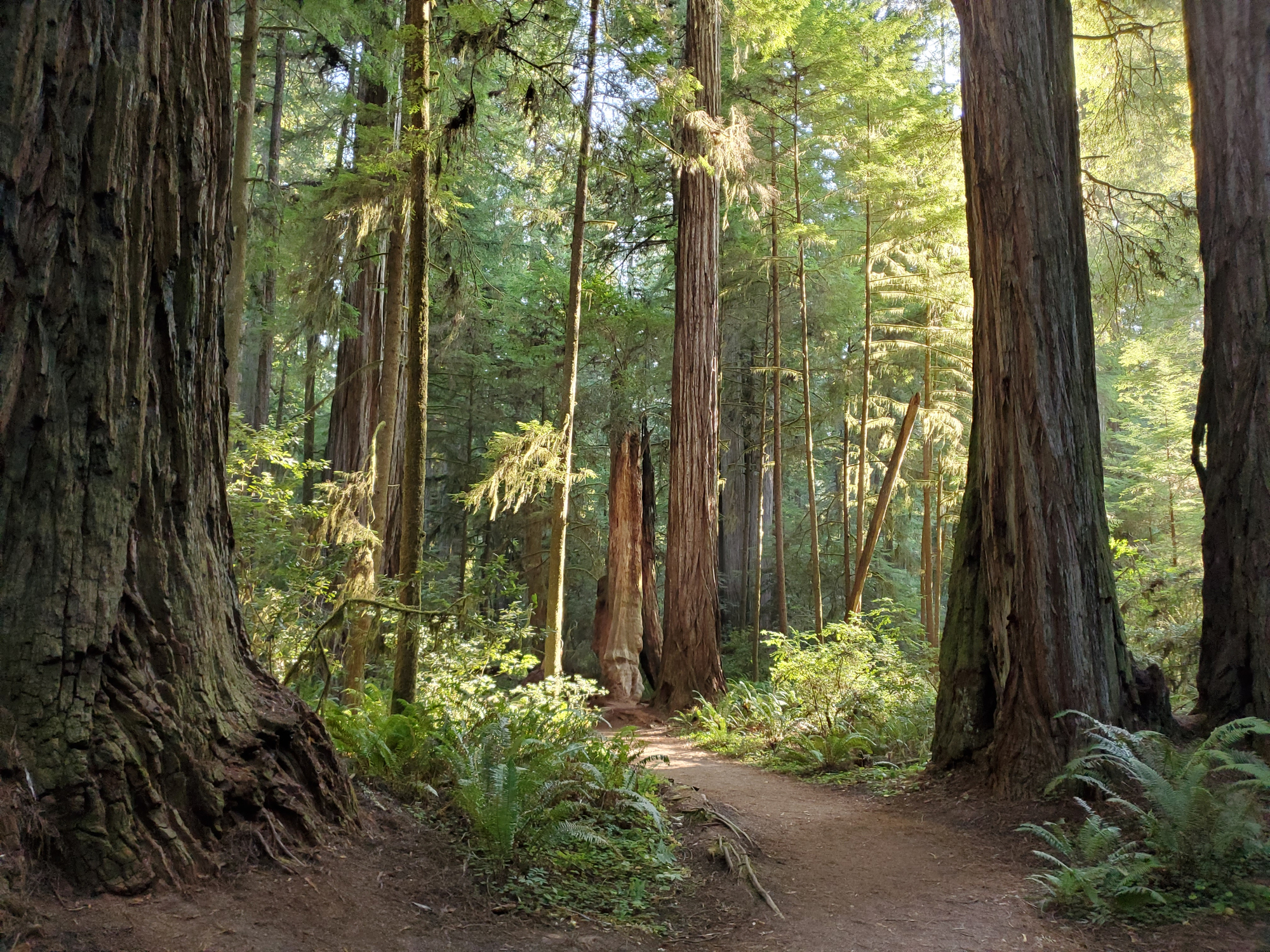Seven Reasons You Should Retire in California
Here are seven reasons to retire in California — from the great Pacific Ocean to the great wine of Napa Valley.
Erin Bendig

Have you ever wanted to retire in California? People love to mock the West Coast, claiming California is overpopulated with thrill-seekers, aging hippies and self-absorbed fitness buffs. Critics say the state is saturated with strip malls and an excess of big box stores, that the air is polluted, the weather unpredictable and traffic unbearable.
In reality, the Golden State offers retirees plenty of warm weather, space to wander and more access to nature than many other parts of the country, with an abundance of protected coastlines and national parks — all within a day’s drive. The focal point for photographers, hikers and tourists is California’s crown jewel, Yosemite.
California has eight hundred and forty miles of scenic coastline that stretches from Mexico to the Oregon border and there are still towns off the beaten track that are wonderfully quiet and quaint. Besides that, California doesn't tax Social Security income, but other forms of retirement income are fair game. The average effective property tax rate is not high, although median home prices are.
From just $107.88 $24.99 for Kiplinger Personal Finance
Become a smarter, better informed investor. Subscribe from just $107.88 $24.99, plus get up to 4 Special Issues

Sign up for Kiplinger’s Free Newsletters
Profit and prosper with the best of expert advice on investing, taxes, retirement, personal finance and more - straight to your e-mail.
Profit and prosper with the best of expert advice - straight to your e-mail.
If you're currently trying to decide on the best place to retire, consider adding California to your list of potential locations. Read on to see what's out there — and if you feel inspired to head west, you're not alone.
1. Attractions of California’s smaller cities
Los Angeles, San Diego and San Francisco are well known for their diversity and energy — but California’s smaller cities are easier to navigate and less expensive. Housing costs are lower in San Joaquin Valley’s Stockton, Bakersfield, Fresno and adjacent Clovis.
For example, the average home value in San Francisco is a hefty $1,180,795, up 0.6% year-over-year, while in Stockton, it's only $445,033, according to Zillow. The average San Diego home value is $1,021,321, but the average home value in Clovis is just $519,069.
Plus, less gridlock in moderately sized, metropolitan areas means that in minutes, instead of hours, you can be at the beach, get lost in the woods or even climb a mountain. Fresno is a prime example, conveniently located at the crossroads of three national parks: Yosemite, Sequoia and Kings Canyon.
Of the Bay Area’s nine counties, the California Housing Affordability Tracker says housing costs in the coastal areas are significantly higher than in other areas. In fact, housing costs in California, no matter where you settle, far exceed the rest of the country. Yet, there are a few wallet-friendly options. According to HomeSnacks, Calipatria, located in Imperial County, is the least expensive town for housing costs in California, with a median home price of approximately $204,100 and a median rent of $78. The most affordable housing markets are in Far North counties like Lassen, Siskiyou, Tehama and Plumas, and inland (the Central Valley).
However, most cities in California are seeing home values grow as competition continues to intensify, pushing up prices and making buying a house one of the most expensive propositions in the country, according to Zillow.
2. Theaters and music festivals
Newly retired East Coast residents don’t have to miss the allure of Broadway, as numerous productions grace regional theaters, such as Berkeley Repertory Theater, La Jolla Playhouse, San Diego’s Old Globe, Center Theatre Group and Deaf West Theatre, South Coast Repertory in Costa Mesa and Ojai Playwrights Conference. If you head in to San Francisco, you can catch plays at the American Conservatory Theater and more.
Young and old rave about high-profile performers at Coachella, one of California’s most celebrated music festivals. Annual outdoor events include Napa’s BottleRock, Reggae on the River, San Francisco’s free Stern Grove Festival, Newport Beach and Monterey Jazz festivals, and Splash House in Palm Springs.
3. Literary history and higher education
If you're into reading and poetry and find both (or either) a creative way to to express your imagination, you may be pleased to learn how many authors were born in California or chose to live there. Late, legendary poet Lawrence Ferlinghetti cofounded San Francisco’s City Lights in 1953 when it was the country’s first all-paperback bookstore, famous for publishing Allen Ginsberg’s controversial “Howl.”
Writers’ backstories are revealed on visits to the National Steinbeck Center in Salinas, M.F.K. Fisher’s Last House in Glen Ellen, Jack London’s Wolf House (next to wife Charmian London’s House of Happy Walls) also in Glen Ellen, Eugene O’Neill’s Tao House in Danville, Robinson Jeffers’ Tor House in Carmel-by-the-Sea, the John Muir National Historic Site near Martinez and Henry Miller Memorial Library in Big Sur, to name a few.
Another big plus: there is a strong commitment to education in the state, too, and seniors have access to it. That's because California is one of the states offering free or cheap college for seniors or retirees. State residents 60 and older have tuition waived in the California State University system, and the 116 California Community Colleges have many noncredit courses for no tuition and senior citizens can apply for a fee waiver if they enroll in credit courses.

4. The great outdoors
Between the Pacific Coast Trail’s 2,650 miles and a coastline boasting more than 200 public beaches, California is a haven for hikers, swimmers and surfers. It’s not uncommon to bask in the sun, oceanside, lakeside or on the river’s edge — while simultaneously admiring snowcapped mountains or hiking one of California's 12,225 hiking trails.
The state's Mediterranean climate (especially in counties like Sonoma and Napa), low humidity, mild winters and long growing season are idyllic for gardening, foraging, camping, glamping and RV road-tripping.
5. Delicious food at your fingertips
The California Department of Food and Agriculture reports that over a third of the country’s vegetables and three-quarters of the country’s fruits and nuts are grown in the state; top agricultural crops are grapes, almonds, strawberries, pistachios, lettuce, tomatoes and walnuts.
California also excels as the sole commercial producer, according to CDFA, of artichokes, celery, garlic, kiwifruit, honeydew melons, nectarines, olives, Clingstone peaches and plums. It's no surprise that produce in grocery stores and farmers markets is gently priced, just-picked and irresistible.
When Chef Alice Waters opened Chez Panisse in 1971, the phrase "farm-to-table" became the buzzword for delicious, sustainable cooking. Her Berkeley restaurant introduced the concept of featuring farmers on the menu. She gambled that buying the freshest, most local produce would allow diners to savor those efforts.
She was right. Waters has inspired countless chefs to use seasonal, organic ingredients, and today, California is dotted with healthy eateries that echo her mantra.
6 and 7. Of course ... golf courses and wineries
Golfers dream about teeing off at century-old Pebble Beach on the spectacular, windswept Monterey Peninsula and San Diego’s Torrey Pines, named after the wild, coastal tree.
The National Golf Foundation says Florida is the only state with a higher number of golf courses than California’s 921. Riverside County has 139 facilities (some with more than one course), while there are 102 golf facilities in Los Angeles County, according to the NGF. (Due to the recent California fires, that number is lower, at least for the time being.)
Meanwhile, retired oenophiles and teetotalers get a kick out of living amid more than 4,700 wineries. Besides wine (and olive oil) tasting and buying, wineries are picturesque places to picnic, stroll and relax. New appellations or AVAs (American Viticultural Areas) continue to pop up, so there’s always another bottle to appreciate.
According to the California Association of Winegrape Growers, California is the No. 1 wine producer in the nation and the No. 4 wine producer in the world behind Italy, France and Spain.
Julia Child was born in Pasadena, so bon appétit and cheers.
Related Content
Profit and prosper with the best of Kiplinger's advice on investing, taxes, retirement, personal finance and much more. Delivered daily. Enter your email in the box and click Sign Me Up.
Lisa Amand covers culture and neighborhoods in New York City, real estate, California wine country, farmers markets and all things San Francisco. A former restaurant critic and winner of a James Beard Journalism Award, she’s based in Manhattan.
- Erin BendigPersonal Finance Writer
-
 I'm 61 and want a divorce. Should we live separately but stay married?
I'm 61 and want a divorce. Should we live separately but stay married?We asked Certified Divorce Financial Analysts for advice.
-
 What's in Store for the Stock Market in 2026?
What's in Store for the Stock Market in 2026?Wall Street expects the bull market to keep running in the year ahead.
-
 Is Your Retirement Plan Missing a Caregiving Strategy?
Is Your Retirement Plan Missing a Caregiving Strategy?Millions of people over 65 care for grandkids, adult kids or aging parents and will also need care themselves. Building a caregiving strategy is crucial.